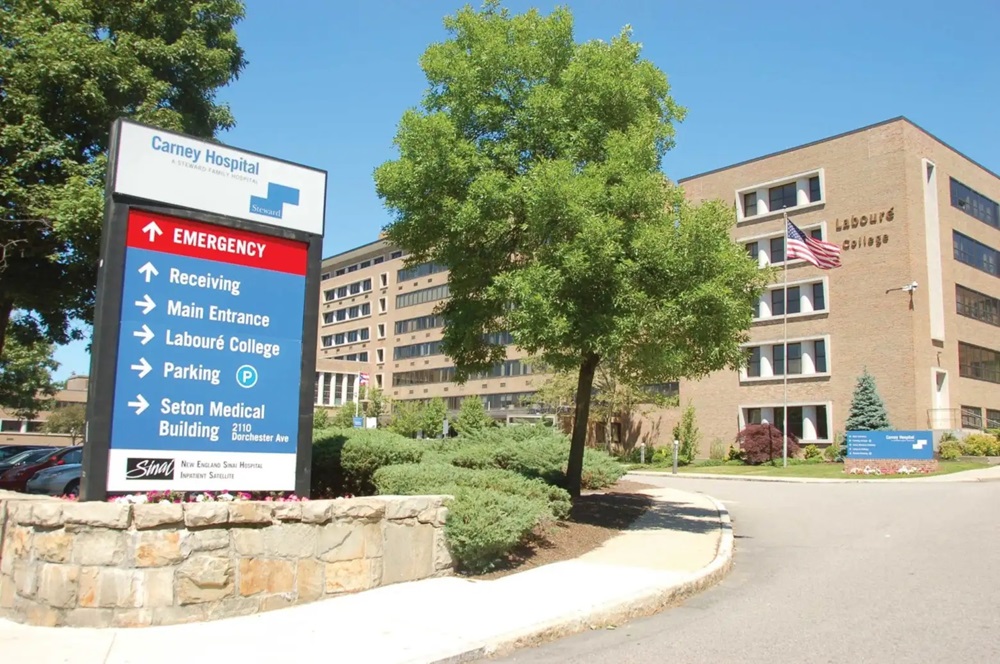Steward outcome is pretty good
The cost to the state could be $600-$700 million
by John E. McDonough and Paul A. Hattis

EARLIER THIS YEAR, when Steward Health’s financial collapse became imminent, we suggested the for-profit chain’s Massachusetts hospitals should be taken over by regional non-profits. The result would redistribute acute hospital resources to strengthen the state’s regional medical systems rather than weakening them further.
While the idea seemed a long shot at the time, it turns out that’s exactly the outcome announced Friday by Gov. Maura Healey. Health & Human Services Secretary Kate Walsh, Public Health Commissioner Robbie Goldstein, Attorney General Andrea Campbell, and their savvy teams have navigated their way to a positive improvement in the state’s medical infrastructure and avoided the nightmare of private equity greed.
Providence-based Lifespan Health System, a Rhode Island non-profit, will purchase St. Anne’s Hospital in Fall River and Morton Hospital in Taunton. Non-profit Lawrence General Hospital will acquire the Holy Family hospitals in Methuen and Haverhill. And non-profit Boston Medical Center will purchase Good Samaritan Hospital in Brockton and, hopefully, St. Elizabeth’s Hospital in Brighton pending results of a state eminent domain seizure. All this will be accomplished in the midst of ongoing federal bankruptcy proceedings in Houston.
Steward Health, its related manifestations, and CEO Ralph de la Torre will rest forever in Massachusetts health care infamy. Also heading for the exit, we believe, is the giant private equity mortgage holder, Apollo Global Management, which is selling its real estate interests in four of the hospitals outright to the new buyers, and the fifth, St. Elizabeth, is having its property seized by the state through an eminent domain proceeding.
The faster Apollo is out the door the better. Though Apollo will certainly contest the Commonwealth’s $4.5 million fair market valuation for St. Elizabeth’s, state officials seem determined that any fight over money will not interrupt plans for an immediate seizure of the Brighton land and buildings.
Unfinished business remains. Top on the list are Carney Hospital in Dorchester and Nashoba Valley Hospital in Ayer. Both are expected to close by the end of the month. Carney and Nashoba are unlikely to survive as acute care hospitals, so state officials need to define how those sites can still be used to support community health.
Perhaps the state’s eminent domain action in Brighton could lure a potential buyer to devise a plan for these sites as non-acute medical facilities. We hear the University of Massachusetts Medical Center has shown some interest in Nashoba Valley Hospital, and the possibility of a UMass purchase demands a serious second look by all parties as central Massachusetts is not over-bedded or overserved.
As for Carney, Boston Mayor Michelle Wu’s strong statement that zoning laws will prevent the Dorchester site from being used for any non-healthcare use, combined with an eminent domain threat, could spur Apollo to find an acceptable buyer, perhaps even an inpatient behavioral health care provider.

Here are some areas of continuing concern and note:
First, in 2016, Steward officials took the cash from the sale of their buildings and land from their new landlord, Medical Properties Trust, and used most of the proceeds to pay off their private equity masters at Cerberus, and to finance a mad buying spree of hospitals across the nation. Then they began deal making in Malta and Spain, among other locales, now under investigation by the US Department of Justice.
Meanwhile, Steward’s Massachusetts’ hospitals got little to no capital reinvestment, leading to today’s decrepit capital plants and facilities. Now the Commonwealth has to provide financial aid to the nonprofit purchasers to restore the facilities to acceptable quality as well as for short-term operating expenses. This will be expensive. We hear estimates of $600 million to $700 million or more over the next five years.
Second, central and western Massachusetts medical and hospital leaders face their own capital and overcrowding challenges, especially with the likely loss of Nashoba. State officials need to pay closer attention to medical infrastructure needs in those parts of the state. “Not a dime is going to support central and western assets. It doesn’t feel good,” one industry leader told us.
Third, of the two Holy Family Hospitals in Methuen and Haverhill, the second facility is far more tenuous in terms of its survival. The Commonwealth should not leave Lawrence General Hospital officials holding the bag if this part of the solution goes south.
Fourth, the sale of Steward’s 5,000-member physician network, Stewardship Health, is just plain weird and smelly. It was scooped up in a $245 million cash-only deal by Rural Healthcare Group, a puny physician network of 14 clinics and about 50 providers, managed by people with questionable histories, described here as “men whose careers exemplify the dystopian nature of the Medicare Advantage medical arms race.”
Rural Healthcare Group is owned by yet another private equity behemoth called Kinderhook Industries. The bankruptcy judge approved the sale on Friday, though the Massachusetts Health Policy Commission still needs to review it. We will have to wait and see what the commission review uncovers.
Fifth, will the Roman Catholic Archdiocese of Boston, whose mismanagement of the Caritas Christi hospital network triggered this mess in the first place, attempt to prevent the new hospital owners from providing a full range of women’s reproductive health services? Here’s hoping that the Commonwealth puts its foot down even if doing so forces the hospitals to change their names. Others may disagree, but going for care at “St. Elsewhere” rather than “St. Elizabeth” may have some marketing opportunities under Boston Medical Center’s management.
Sixth, one big piece of unfinished business in all of this is the health care oversight legislation that House and Senate leaders could not reconcile before the July 31 faux end of the legislative session. Left on the table is the reinstitution of state health planning after more than 33 years of “let the free market do its magic.” We hope the Legislature, witnessing Steward’s flim-flam, authorizes serious and a legitimate health planning system to avoid future catastrophes.

Seventh, “trust nothing until you see the signed documents!”
John E. McDonough is a professor of practice at the Harvard T.H. Chan School of Public Health. Paul A. Hattis is a fellow at the Lown Institute.
